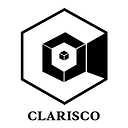Business NFT- “Tokens On Decentralized Network”
“Non-Fungible Token (NFT) with private off-chain and creates a unique tradable asset on a decentralized network.”
The digital revolution turned many physical goods into digital goods such as books, text, or music. The cost of distributing, storying, copying those goods is towards zero. Here music can be remixed, distributed in new channels, and then media can be incorporated into digital works. Anyone with a device can easily record their videos, share pictures, write posts and make music.
Digitalization brings new challenges. For eg: In the physical world verification of authenticity and tracking of ownership of digital assets is so hard. Music is being a digital asset here artists track the number of plays when listeners are streaming from a third party? How do you know which pieces into a mix, what about a remix? And what about plays on youtube? Which person mixing the music gets a reward for new creation?
Nowadays the internet gives us digital ubiquity. Blockchain gives us digital scarcity. Blockchain is used to create a unique token that represents digital assets. Token-based on specific use cases changes the asset of duplication, modification. It creates a relationship between the digital assets and it becomes possible. Creating such a token on a blockchain became easy and to track the lifecycle from creation, mixing, metadata, trade, and more. NFT (Non-fungible Token) is widely used to describe a token that represents a digital asset.
A standard NFT (ERC-721) describes assets and they interact with them. For eg: crypto natives such as crypto kitties or decentral and this establishes a common language. An ERC-721 makes the asset unique and identifiable but also traceable; it creates a new set of liquid markets and makes a wide range of digital goods.
Financial Business Documents as NFT:
Most documents have a digital representation in the world of the financial supply chain. For eg: In a digital financial system the invoices and purchase of the order originates and is processed during the life cycle of each set of data. We are not even scratching the surface and they create trace, unique, and certified documents, and they are based on the financial supply chain.
Here the transformation creates a whole set of possibilities to interact and process the documents and it represents the unique. These documents are assignable and tradable and this is a single source of truth.
ERC-721 combines the public chain data it makes private and it represents the details here each of the assets accesses the current holder on the NFT chain. The blockchain asset we call this as a business NFTs, invoice NFT, and also an order NFT.
By using these tokenization documents assignments become more possible. Attaching metadata to the documents is in a verifiable way.
Combining NFT with Off-Chain Data:
The system built the financial supply chain and the ethereum public infrastructure leverage the peer-to-peer protocol in private document exchange. In this ethereum, the documents are updated and they are committed via precise proofs. In this p2p network, there is a two-layered approach, and combined with the on-chain transaction the system is verified and it ensures privacy, scalability.
Decentralized Financing:
In a decentralized way, the first use cases of NFT on ethereum assigned the payment obligation and this is lending. The existing lending platform on that ethereum supports NFT assets and it gained liquidity. It supports ERC-721 the obligation to easily turn the tradable assets. It accesses liquidity in a completely decentralized way.
https://www.clarisco.com/nft-marketplace-development-services
